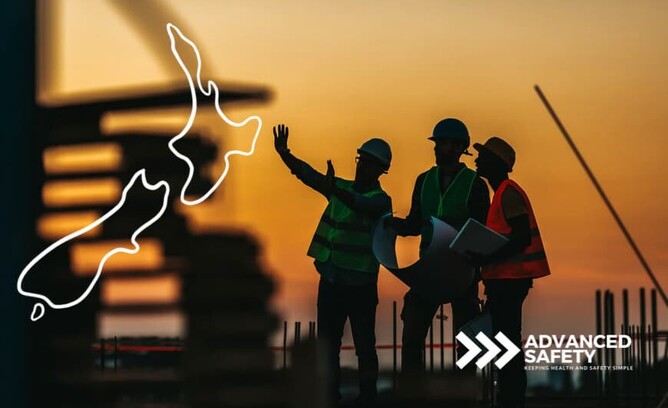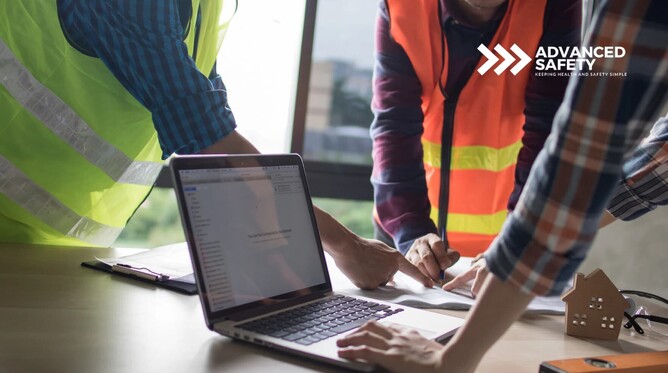Safe Work New Zealand isn’t just a slogan - it’s a commitment to protecting workers’ rights in New Zealand and building safer, more productive businesses.
Workplace safety in New Zealand is central to business success, ensuring every worker returns home unharmed. By following WorkSafe New Zealand’s guidance and embedding safe work practices, organisations can strengthen compliance, improve morale, and maintain operational continuity.
Why Safe Work New Zealand Matters
The short answer is that safe work practices protect people, profits, and reputation. Workplace safety in New Zealand is not just a regulatory requirement — it’s a strategic advantage.
The Impact of Workplace Accidents
A well-managed safety culture leads to measurable business improvements:
Employee retention – people stay where they feel safe and valued.
Higher morale – confidence and trust drive performance.
Cost efficiency – fewer accidents mean fewer claims and disruptions.
A genuine commitment to safe work practices helps prevent these setbacks while improving worker engagement and retention.
The Benefits of a Safe Work Environment
A safe workplace is a productive workplace. Prioritising safety offers several advantages, including:
Employee Retention: Workers are more likely to stay with employers who value their well-being.
Enhanced Morale: A safe environment fosters trust and confidence.
Cost Efficiency: Fewer accidents mean lower costs related to medical claims and downtime.
Take The Free Quiz
In just 3 minutes, discover your compliance zone and 3 fixes to lift your safety game.
See Your Score. Close Your GapsWorkSafe New Zealand – The Champion of Safe Work in NZ
Mission and Vision
WorkSafe NZ is the regulatory authority dedicated to ensuring the health and safety of workers. Their vision is simple yet profound: every worker should return home safe and healthy at the end of the day.
Through a mix of education, guidance, and enforcement, WorkSafe NZ collaborates with businesses to reduce workplace injuries and fatalities.
The Health and Safety at Work Act 2015
The Health and Safety at Work Act (HSWA) 2015 serves as the foundation for workplace safety in New Zealand. Key provisions include:
Duty of Care: Businesses must take all practicable steps to ensure workplace safety.
Worker Participation: Employees are encouraged to actively contribute to safety initiatives.
Accountability: Non-compliance may result in penalties, including fines or operational prohibitions.
WorkSafe’s inspectors actively monitor compliance, offering support while holding businesses accountable for maintaining high safety standards.
Implementing WorkSafe Guidelines
Key Guidelines for Industries
WorkSafe NZ provides industry-specific guidance, addressing unique hazards in sectors like construction, manufacturing, and project management. Examples include:
Construction: Emphasis on fall prevention, machinery safety, and proper use of personal protective equipment (PPE).
Manufacturing: Focus on ergonomics, hazardous substance handling, and machinery safeguarding.
Project Management: Stress on risk assessment, contractor safety protocols, and emergency planning.
Compliance Process
Achieving compliance with WorkSafe’s guidelines involves:
Risk Identification: Conduct regular assessments to spot potential hazards.
Implementation of Controls: Use engineering solutions, administrative controls, and PPE to mitigate risks.
Training and Awareness: Ensure all employees are informed about workplace hazards and safe practices.
Monitoring and Review: Regularly audit safety measures and refine them as needed.
Learn more about risk management with Hazard Notice Boards on Construction Sites.
Building a Culture of Safe Work New Zealand
Training and Education - The Foundation of Safe Work New Zealand
Effective training empowers employees to act confidently in preventing and managing risks. Key training elements include:
Induction Programs: Familiarising new hires with safety protocols.
Ongoing Education: Refreshing knowledge on safety procedures and emerging risks.
Emergency Drills: Preparing teams for potential crises like fires or evacuations.
Encouraging Worker Participation
Involving employees in safety decision-making fosters accountability. Ways to engage workers include:
Hazard Reporting Systems: Make it easy for employees to flag potential dangers.
Safety Committees: Form cross-functional teams to discuss and improve safety measures.
Recognition Programs: Reward employees for outstanding safety contributions.
Continual Improvement
Safety isn’t static; it evolves with workplaces. Businesses should:
Regularly Review Policies: Ensure they align with the latest industry standards.
Analyse Incidents: Use data from near-misses and accidents to implement preventive measures.
Adopt Technology: Use tools like safety management systems to centralise documentation and streamline inspections.
Explore how technology aligns with safety best practices in ISO 45001 in Construction New Zealand.
Monitoring and Enforcement
WorkSafe’s Role
WorkSafe inspectors perform regular site visits, focusing on compliance and hazard mitigation. They provide:
Guidance: Offering advice to improve safety practices.
Accountability: Issuing notices for non-compliance.
Consequences of Non-Compliance
Ignoring safety standards can lead to:
Fines and Penalties: Legal repercussions for failing to meet HSWA standards.
Operational Shutdowns: Work halts until compliance is achieved.
By embedding safe work practices early, businesses avoid costly interruptions and maintain credibility.
Conclusion – Advancing Safe Work New Zealand
A commitment to Safe Work New Zealand principles isn’t just compliance — it’s smart business. When companies put safety first, they protect people, strengthen culture, and enhance long-term profitability.
Workplace safety in New Zealand starts with leadership and accountability. By following WorkSafe NZ’s guidelines, companies create environments where safety and success go hand in hand.
Need help implementing safety measures? Contact Advanced Safety today to ensure your workplace thrives with safety at its core.
Want to Improve Your Workplace Safety?
Contact Advanced Safety for expert guidance and support.
Contact Us TodayFrequently Asked Questions – Safe Work New Zealand
What does Safe Work New Zealand mean?
Safe Work New Zealand refers to the combined effort of businesses and WorkSafe NZ to ensure every worker returns home healthy and safe.
Who is responsible for workplace safety in New Zealand?
Under HSWA 2015, the PCBU (Person Conducting a Business or Undertaking) holds primary responsibility, supported by officers, managers, and workers.
How can businesses align with Safe Work NZ standards?
Implement risk assessments, involve workers, train staff, and continually review systems.
What are workers’ rights in New Zealand regarding safety?
Workers have the right to a safe workplace, to raise concerns, and to refuse unsafe work without penalty.
What are the penalties for non-compliance?
Penalties can include fines, enforcement notices, or prosecution under HSWA 2015.



